Less-Lethal Devices
Less-Lethal Devices
Less-lethal devices, equipment or weapons, previously called non-lethal weapons, are equipment designed to immobilize, impair or delay the action of a live target, with less probability of causing permanent damage to that target than any conventional weapon, whether white or fire. Whenever lethality is not desired, especially in cases where the target is not a dangerous element, such as in cases of public disturbance control, the use of conventional weapons becomes inappropriate given the associated high lethality risk. It is exactly when less-lethal weapons or equipment become the best choice, precisely because they minimize the risk of lethality.
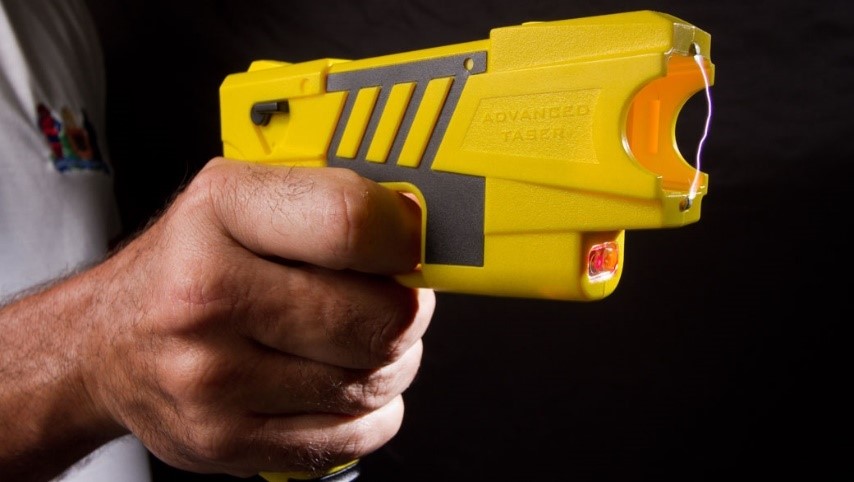
Although they may be used by military forces in special cases, such as in GLO (Law and Order) actions or in the participation of UN troops in occupation forces to promote stability and maintain peace, it is in police forces that less-lethal equipment finds its preferential use, whether in preventive policing or in the control and dispersion of disturbances or unwanted collective actions. They are also used to contain possible damage to public and private property, to restrain or immobilize offenders or elements displaying aggressive behavior, to control prisoners, or for personal self-defense, in situations where the use of lethal force is prohibited or undesirable, or where the rules of engagement require minimum casualties.
Until the development of less-lethal weapons began, police around the world had few or no low-lethality options for riot control. Tactics then used by police for non-lethal purposes included a wall of men with batons slowly advancing on the crowd or officers mounted on horses and trained to advance and disperse disturbances and riots. Other approaches included rifles with lower-powered cartridges, salt balls, beanbag shells, or shooting so that the projectile bounced off the ground. In the mid-20th century, with the integration of fire control systems in major cities, police discovered that high-pressure hoses could be effective in dispersing crowds, which led to the development of specialized water cannon trucks for riot control. Trained police dogs were also commonly used to scare and disperse protesters and arrest individuals.
History of Less-Lethal Weapons Development
Less-lethal weaponry began to be developed in the 1960s, when numerous urban protests erupted around the world. At that time, military and police officers, facing an undesirable escalation of urban disturbances, had few options for not inflicting permanent harm on their opponents. They had truncheons, clubs, bayonets, and sabers as an alternative to firing live ammunition into crowds. Between the late 1980s and early 1990s, the Non-Allethality Policy Review Group of the U.S. Global Strategy Council in Washington and other independent study groups around the world made a concerted effort to develop more life-conserving and environmentally responsible weapons than were available at the time. The US and other governments agreed and began an organized development of non-lethal weapons to provide an acceptable range of options between talking and shooting.
In the 1980s, the development of high-strength plastics such as Kevlar and Lexan revolutionized body armor and personal shields and allowed the development of new tactics for riot units. Police officers were now able to confront violent protesters who threw dangerous projectiles, achieving greater safety by not resorting to lethal methods to disperse them.
Over time, new non-lethal devices were introduced, such as chemical agents in the form of tear gas and pepper spray, stun grenades, rubber bullets, changing riot control tactics to rely less on a violent response to aggressors while discouraging their advance. Self-defense tactics were also developed. Between the 1980s and 1990s, police officers began to employ personal items such as pepper sprays and electroshock temporary incapacitation weapons, which eventually invaded the self-defense market.
In the late 1990s and early 2000s, police began to employ new weaponry that launched spheres, similar to paintball, but filled with liquid or powder capsaicin, which is the active ingredient in pepper spray. Indelible marker paint was also used on the spheres to mark the riot leaders so that they could be more easily identified and arrested when they left the riot.
In 2001 the United States Marine Corps revealed the development of a less-lethal energy weapon called the Active Denial System. This was a device that emitted a directed beam of high-frequency microwaves capable of heating the living matter in the target region rapidly and continuously for the duration of the beam, causing intolerable and transient pain without any permanent damage. The skin temperature of a person subjected to this weapon would jump to approximately 54°C in less than 2 seconds, depending on the initial skin temperature. The penetration of the beam into the human skin was superficial, only a few millimeters, and the system did not produce any permanent sequelae.
In 2004, author Jon Ronson cited an unclassified military report entitled "Nonlethal Weapons - Terms and References," where several acoustic weapons were listed, at different stages of development, including infrasound (very low frequency sound), which can travel long distances and easily penetrate buildings and vehicles. The predicted biophysical effects were nausea, intestinal derangement, disorientation, and vomiting.
Non-lethal weapons are intended to provide an effect to achieve a reliable degree of incapacitation, but without the long-lasting and lethal or permanent effects of conventional weapons. The types of effect vary according to the technology employed: kinetic projectiles cause blunt impacts and trigger pain receptors to cause a behavioral change; bright lights temporarily degrade the ability to see; loud noises cause temporary pain and extreme discomfort; etc.
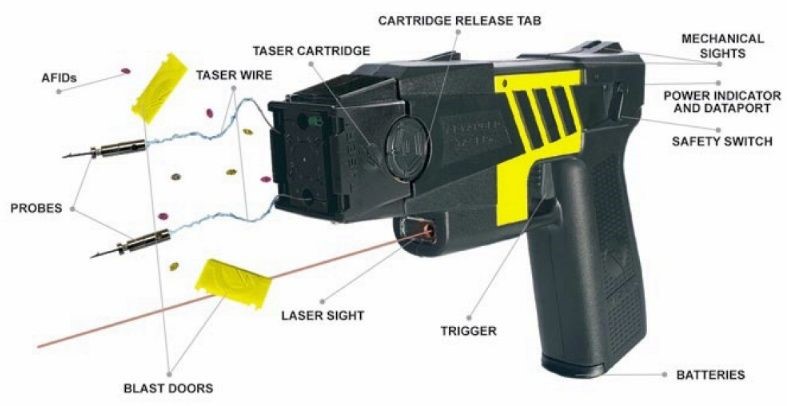
Despite the advances that have been made, non-lethal weapons can still cause harm. This is particularly true with certain technologies that can interact with vulnerable regions of the human body, such as kinetic munitions hitting the head, neck, eyes, abdominal and urogenital regions of the body. For this reason, some analysts have considered the term "non-lethal" to be inappropriate and have recommended employing the term "less-lethal," which has been widespread today. Even so, the reduction of consequences, associated with an increase in the impacting capacity of this category of weaponry has been the subject of continued improvement and development studies. It is important to note that cases of injury or death caused by the use of less-lethal weapons are very rare, almost always resulting from improper aim, unwanted ricochets, pre-existing medical causes, inadequate user training, repetitive applications, or intentional misuse. It is important to emphasize that the term "non-lethal" means, above all, the absence of intent to kill.
Among the most commonly used products are chemical agents, in the form of powder or pepper and tear gas, which can be launched by means of grenades, sprays or projectiles. There is also the morale-boosting grenade and, among the special ammunition, the rubber projectile, capable of providing controlled impact, and the indelible marker paint - difficult and time-consuming to remove, for the marking and identification of specific elements. Among the equipment, there are tonfas or truncheons, grabs for individual immobilization, and active protection shields.
The Use of Electricity
Since the 1970s, electricity has been used in some less-lethal devices. Initially, in the form of electric batons (tonfas or batons) capable of producing pain on touch, and later, in the form of electric guns capable of incapacitating the individual for a few seconds, by circulating a low amperage current in the body. Although the incapacitation time is only a few seconds, it is enough to allow the policeman to properly handcuff and immobilize the victim.
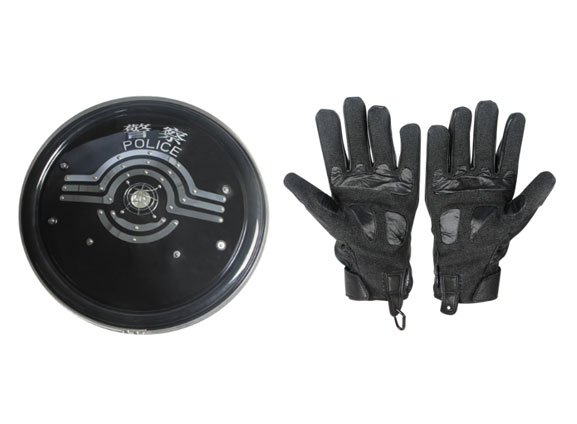
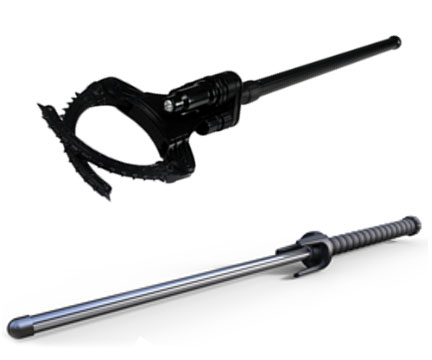
This current, although it produces a temporary incapacitation, is not capable of causing permanent injury. Over time, the range of less-lethal equipment using electricity has been greatly expanded to include electric gloves and electric restraining clutches. Handcuffs and electric vests have been developed for transporting prisoners. Personal protective shields have also incorporated not only the ability to deliver electric shocks, but also sound versions, which cause strong auditory discomfort, and light versions, in which super LEDs produce temporary glare, making it difficult to attack the officer.
The purpose of stun guns is to incapacitate the enemy at a safe distance, between 3 and 12 meters, depending on the manufacturer and model, and to facilitate training in their use, they are usually produced in a format as close as possible to conventional guns. There are other electroshock weapons, compact and dedicated to personal defense, which require direct contact with the aggressor in order to work. Even so, they are quite effective in incapacitating the aggressor for several seconds, allowing the victim to escape and flee..
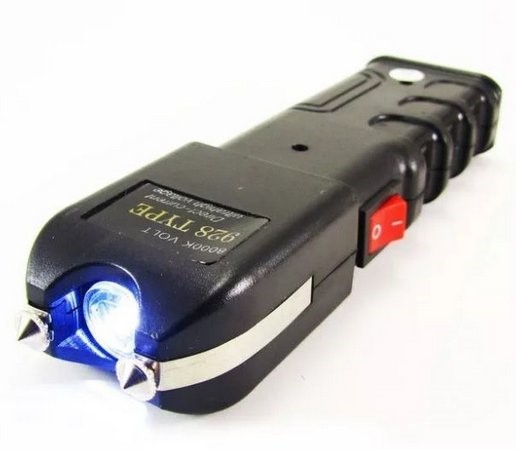
Some Less-Lethal Device Models
Less-Lethal Ammunition - Less-lethal ammunition is produced to be fired by special firearms and is intended to incapacitate the target only. Blunt in effect, they rely on the transfer of kinetic energy and the trauma caused to effect this incapacitation. These are rubber, wax or plastic bullets, soft polymer balls, sponge grenades, airfoil ring projectiles, rubber bullets with electroshock effect. High velocity paintball guns are also used to launch less-lethal contents, such as pepper powder and tear gas, into the spheres. The most common weapons employed for firing less-lethal ammunition are 12-gauge shotguns (0.729 inches) and 37mm and 40mm (1.46 and 1.57 inches) grenade launchers.
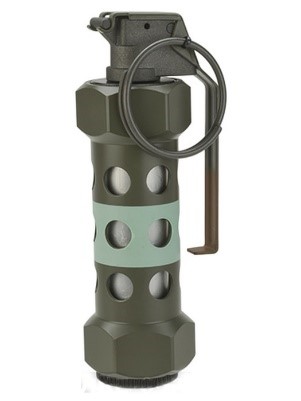
Grenades - In 1972, in the hijacking of Sabena Flight 571, stun grenades were employed to allow Israeli forces, headed by Ehud Barak and including Benjamin Netanyahu, to storm the plane and within 10 minutes overwhelm the situation, killing Ali Taha, leader of the terrorist group, his aide, and capturing two other terrorists, while rescuing all the passengers, with only three being injured and one dying from his injuries several days later. There are several types of less-lethal effect hand grenades, such as "flashbang" grenades, which cause stun by intense light and sound; "stinger" grenades, which project numerous rubber shrapnel pieces; and grenades designed to release chemical irritants.
Employment of Water and Additives - Water Launching Vehicles are tank trucks that have one or more cannons capable of launching pressurized water in large flows over long distances, commonly used for crowd and riot control, dispersing or preventing the advance of protesters. Similar in principle to that employed by fire extinguishing vehicles, the pressure is reduced according to the angle of inclination of the cannon, in order to avoid excessive force, especially on those closest to it, thus preventing injuries. Water-filled spheres are being developed for small arms, similar to paintball guns.
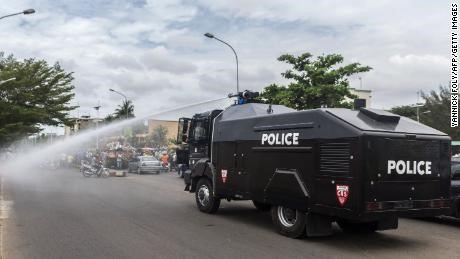
Some odorizing chemicals produce such unpleasant smells that it is unbearable for people to stay in place, forcing them to disperse. In 2008, the Israel Defense Forces began employing the skunk (stinky) mixture in crowd control. It is a product that is added to water, dropped from one of the cannons of a Water Launch Vehicle (pictured above) and creates a mist that leaves a terrible smell of rottenness or sewage on everything and everyone it touches, which is not easily removed.
Pepper Spray - A portable device, for individual use, for personal protection, which has the capacity to spray a pressurized form of oleoresin capsicum extract (OC), an irritant product derived from cayenne pepper, which has a high irritating capacity, causing intense burning in the eyes and throat, making it unbearable to remain nearby. It also impairs the ability to open the eyes and see what is happening around, allowing the victim who fired the spray to escape from the attacked aggressor. QUARTZO Defense Engineering is the distributor of the best professional pepper spray device in Brazil.
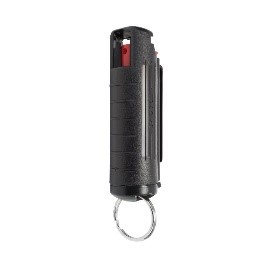
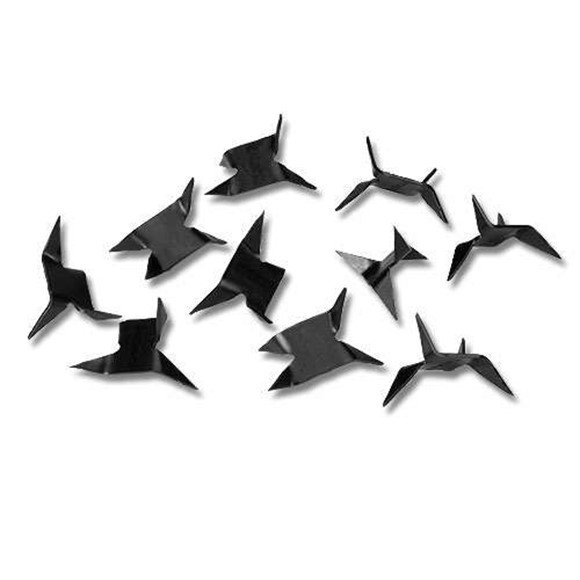
Metal Caltrops - These are metal cutouts with sharp edges and corners that seek to hinder the advance of troops on foot or transported by vehicles that have tires. In use since Roman times, it employs a concept familiar to the Greeks of the 4th century BC, who used stones, bushes, debris, trees, etc. positioned in the path of enemy transport, in loose devices or trapped in the terrain, hidden in waterways of mandatory crossing. The purpose was to deter the enemy or delay any suspected hostile groups to prevent or limit incursions. Due to the difficulty of producing them in quantity in ancient times, they were rarely used except in the defense of limited areas or choke points. The increasing ease of production allowed caltrops to be used in modern conflicts, such as during the Korean War, where Chinese troops, usually wearing only light footwear, were particularly vulnerable. In modern times, special caltrops, made of extremely hard and sharp metal, with magnetic capability are available for the restraint of wheeled vehicles.
Directed Energy Weapons - These are devices that emit high amounts of energy in a specific direction, depending on the aim of the operator, and are capable of immobilizing people and machines (e.g. vehicles). Directed energy weapons include electromagnetic weapons (including laser weapons) and microwave weapons, particle beam weapons, sonic weapons, and plasma weapons.
Pulsed Energy Projectile - The Pulsed Energy Projectile or PEP is device under development by the U.S. military, which involves the emission of an invisible laser pulse that, upon contact with the target, creates a small amount of plasma and explodes superficially. This produces a pressure wave that stuns the target and knocks it out, as well as electromagnetic radiation that affects nerve cells, causing a painful sensation. The pulsed energy projectile is intended for riot control and would work at distances of up to 2km. Since it still weighs about 200 kg, it will have to be mounted on vehicles. The device was developed by Mission Research Corporation (now owned by Orbital ATK) and employs a deuterium fluoride laser chemical device producing infrared laser pulses. The plasma (produced by the early part of the pulse) explodes because its electrons absorb energy from the later part of the pulse. U.S. Special Operations Command's plans for fiscal year 2010 included beginning work to develop a pulsed-energy projectile against UAVs.
Active Denial System (ADS) - The Active Denial System is a non-lethal directed energy weapon developed by the US military designed for area denial, perimeter security and crowd control. Informally, the weapon has also been called a heat ray, because it works by heating the surface of targets, such as the skin of human individuals. The electromagnetic radiation produced is powerful enough to penetrate the human skin and make the nervous system think that the victim is on fire, even though no physical damage is caused. Future combat vehicles, such as the American GCV infantry fighting vehicle, will incorporate non-lethal weapons.

In 2011, the ADS was redesigned to make it smaller, more reliable, and capable of being used on the move. The ADS II is being designed to operate with moving aircraft and moving ground vehicles. The Air Force Special Operations Command is experimenting with mounting an ADS on the AC-130J Ghostrider fighter, with a capability to crowd or threaten individuals on the ground, providing a non-lethal option.
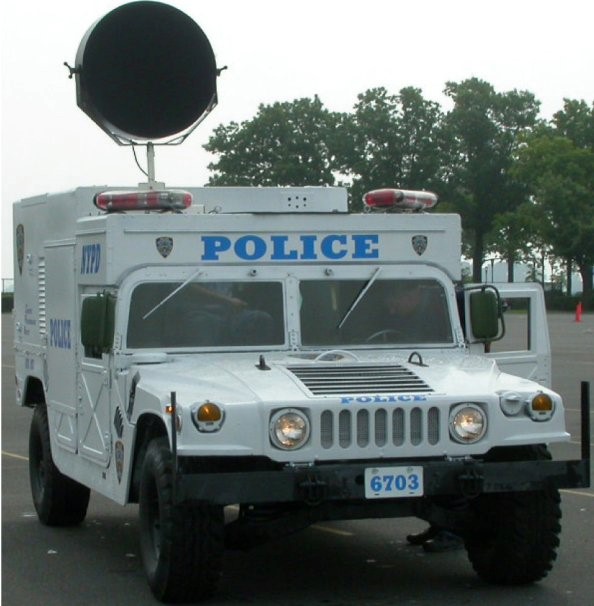
Dazzler - This is a directed energy weapon designed to temporarily blind or disorient its target with intense directed radiation. Targets can include sensors or human vision. Dazzlers emit infrared or invisible light against various electronic sensors, and visible light against humans, when intended to cause no permanent damage to the eyes. Laser emitters are employed, causing dazzling (blurring of vision caused by excessive light, glare, or other factors).
Most contemporary systems are portable, and operate in the red (laser diode) or green (solid-state, diode-pumped DPSS laser) areas of the electromagnetic spectrum. Initially developed for military use, some models are being developed for police use. It should be noted that weapons designed to cause permanent blindness are prohibited by the 1995 United Nations Protocol on the subject.
The Dazzler is a non-lethal weapon designed to cause temporary blindness or disorientation and is therefore outside this protocol. The PHASR Rifle is a non-lethal Dazzler prototype, which employs a low-intensity laser and is being developed by the US Department of Defense. Its purpose is to temporarily disorient and blind a target. Several other nations are developing blinding laser weapons.
Long Range Acoustic Device - LRAD - is an acoustic device developed by LRAD Corporation to send messages and warning tones over long distances or at higher volume than normal loudspeakers. LRAD systems are used for long-range communications in a variety of applications, including as a means of less-lethal, non-kinetic crowd control. Although they have been called a "sonic weapon," LRADs are not inherently for military use. According to the manufacturer's specifications, the systems weigh from 15 to 320 pounds (6.8 to 145.1 kg) and can emit sound in a 30° - 60° beam at 2.5 kHz. The manufacturer also produces systems for public buildings and mass notification use that transmit in 360°.
A very interesting piece of less-lethal equipment recently released is the device called BolaWrap, used to restrain an individual in an undesirable attitude, preventing him from moving without any risk to his health. It works by shooting, at high speed, a thin Kevlar cable, with a hook on each of its two ends, which, when it reaches its target, rolls up completely, wrapping it in a way that makes it impossible for it to move.
. Considered as a kind of "remote handcuff", the portable remote restraint device must be aimed at knee or elbow height to act most effectively. Each cable has a four-pronged hook at each end.
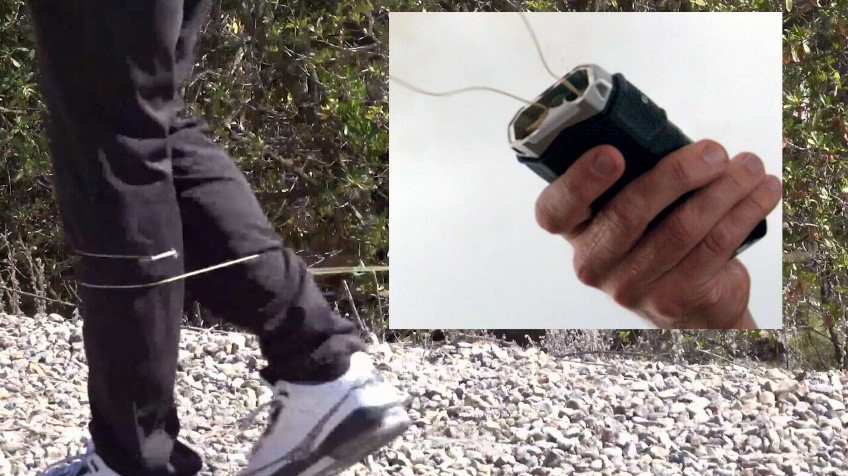
The cable, its hooks, and the explosive charge that causes the assembly to launch is contained within a replaceable cartridge. Each cartridge can only be used once, and after use can be replaced with a new cartridge in about 3 seconds.
Even though less-lethal weapons have been and continue to be developed not to cause death or permanent damage, their improper use, whether in the intensity, frequency, distance or method for which they were developed, can bring harm to the target. For this reason, it is very important that you always observe and follow the guidelines for the proper and correct use of the less-lethal device you are employing.
QUARTZO Defense Engineering has, in its portfolio, a vast line of latest generation less-lethal equipment. Lightweight, resistant, reliable products capable of meeting the needs of individual use, personal defense and the operational requirements established by the national defense and public security forces, especially the requirements of riot police units and municipal guards. Our line includes the most modern and safest electric incapacitation gun on the market, with an effective range of 12m and fully waterproof. It also includes electric grips, sticks and gloves, electric, sound and glare shields, and the BolaWrap portable personal restraint device.
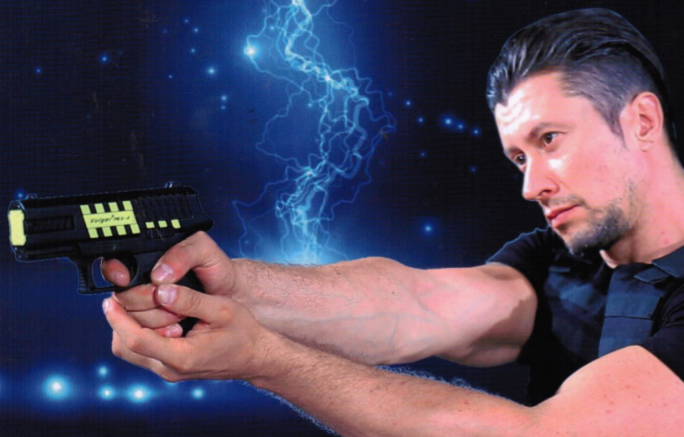
Our less-lethal products are designed for riot control, and primarily for specialized civilian riot control units and municipal guards. We also have several products for personal defense and security, for authorized individual use. Be sure to contact us and present your need for modern equipment with less-lethal technology.
